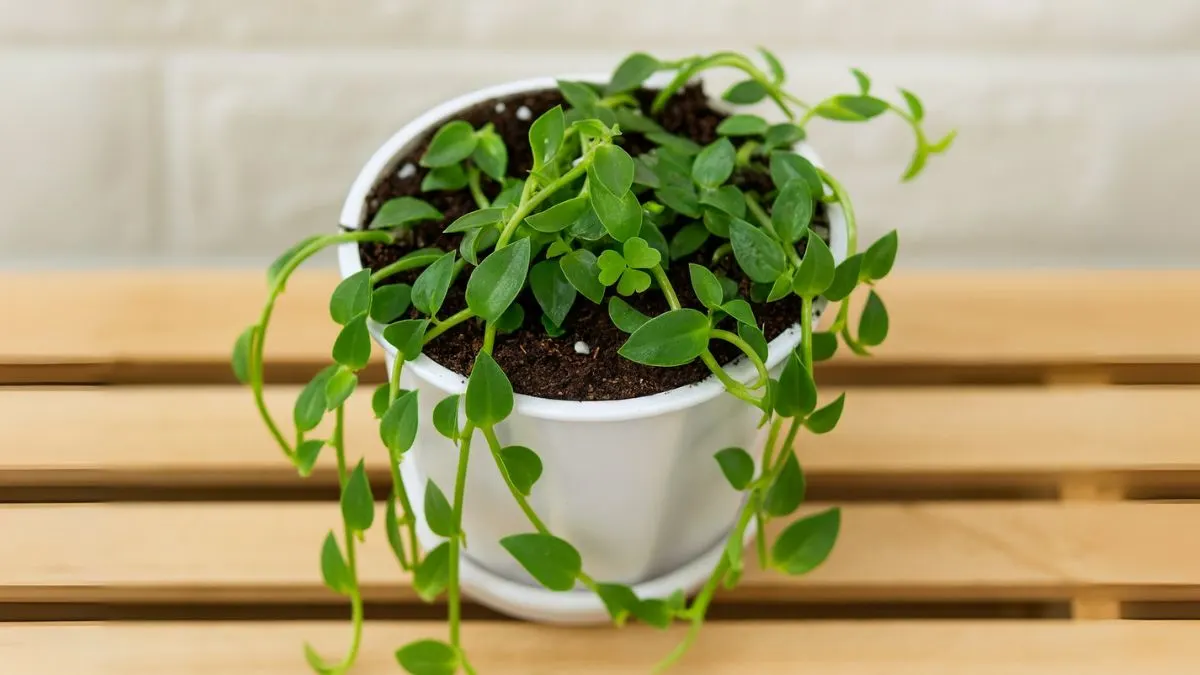If you’re searching for a lush, trailing plant that can instantly brighten your living space, look no further than the Turtle Vine (Callisia repens). Known for its tiny, vibrant leaves and cascading growth habit, it’s an easy favorite among houseplant lovers in Canada, the USA, and across the world.
This guide walks you through everything you need to know about Turtle Vine plant care—from choosing the right spot to propagating new cuttings. Along the way, I’ll share personal tips I’ve learned from growing them indoors and outdoors.
Lighting Needs: Find the Perfect Spot

Turtle Vine plants thrive when you provide bright, indirect light. Harsh direct sunlight can scorch their delicate leaves, while too little light may cause leggy growth.
- Indoors: Keep these plants in partial shade outdoors or bright but indirect light indoors.
- Windows: Choose a window or location that receives at least 6 hours of sun per day for vibrant, compact foliage.
In my own apartment, I placed my Turtle Vine near a south-facing window with sheer curtains. The leaves stayed lush green, with occasional purple tones—a sign of perfect light balance.
Watering Routine: Avoid Over or Underwatering
Turtle Vines love slightly moist soil but hate standing water. The golden rule is to keep the soil consistently moist but not waterlogged.
- Follow moderate watering: let the top inch of soil dry before watering again.
- During summer, water more frequently; in winter, reduce it to avoid root rot.
From experience, using a moisture meter helped me avoid overwatering. These plants are forgiving but will quickly show stress if left in soggy soil.
Also Read: Why Aglaonema Evergreen Is the Perfect Indoor Plant for Beginners
Soil Requirements: Get the Mix Right
Healthy roots mean a thriving plant. Turtle Vines prefer well-drained and aerated soil. Always use a well-draining potting mix enriched with organic matter for optimal growth.
Here’s a simple table for guidance:
Requirement |
Best Option |
Why It Works |
Soil Type |
Well-drained and aerated soil |
Prevents waterlogging and root rot |
Potting Mix |
Use a well-draining potting mix with perlite & peat moss |
Ensures airflow to roots |
Drainage |
Pots with holes |
Excess water escapes easily |
Temperature & Humidity: Mimic Their Native Climate
Turtle Vines are tropical at heart. To keep them happy:
- Maintain temperatures between 60–85°F (16–27°C).
- Aim for moderate to high humidity to replicate their natural environment.
If you live in a dry climate like parts of Canada or northern USA, place a humidifier nearby or group plants together. I often mist my Turtle Vine lightly, which keeps its leaves plump and glossy.
Propagation: Grow New Plants Easily
One of the joys of owning a Turtle Vine is how easily it propagates. Simply place a healthy cutting in a clean jar of water until roots appear. Once the roots reach 1–2 inches, transplant the cutting into soil.
This method is beginner-friendly, and I’ve gifted many rooted Turtle Vine cuttings to friends. It’s a low-cost way to expand your indoor jungle.
Turtle Vine as an Indoor Star
Turtle Vine plants grow well indoors with indirect light, making them perfect for apartments, offices, or small spaces. Their trailing vines look stunning in hanging baskets or as table accents.
I’ve noticed that when paired with other indoor favorites like pothos or prayer plants, Turtle Vine adds a unique texture that enhances the overall greenery.
Also Read: How to Grow and Care for the Syngonium Pink Plant at Home
Outdoor Care Tips
For those in warmer regions of the USA or Canada’s coastal zones, Turtle Vine can also thrive outdoors. Just remember:
- Keep these plants in partial shade outdoors to protect from harsh midday sun.
- Ensure they’re in containers or raised beds with excellent drainage.
In my garden, I kept one Turtle Vine pot under a pergola. The dappled light created an ideal microclimate, and the plant flourished beautifully.
A Plant Worth the Effort
Turtle Vine may be small in size, but it packs a punch in beauty and charm. With the right care your plant will thrive indoors or outdoors. So, whether you’re a beginner or a seasoned plant parent, this versatile plant can easily become one of your favorites. Try propagating a few cuttings, share them with friends, and enjoy the cascading beauty of Turtle Vines year-round.
👉 Ready to expand your indoor jungle? Start with a Turtle Vine and see how quickly it becomes your new plant obsession.






